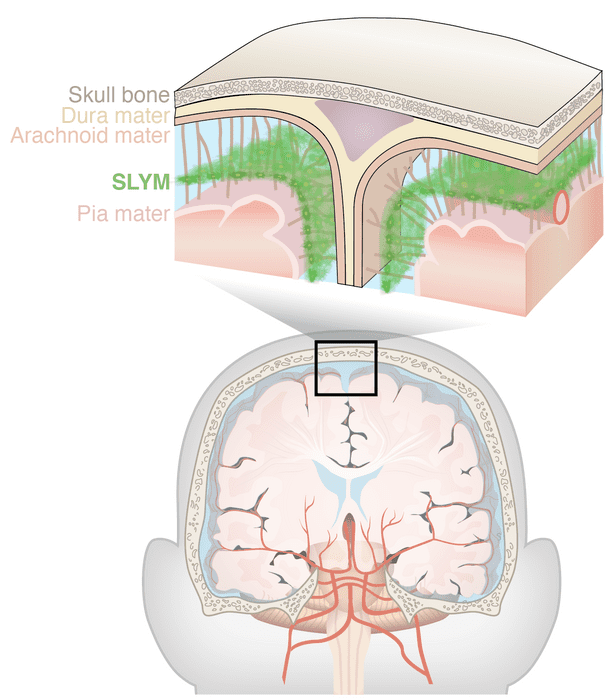An anatomical structure, which has never before been described, has been discovered in the brain. The layer of tissue, called the subarachnoid lymphatic-like membrane (SLYM), plays an important role in both the brain’s waste disposal and immune systems, acting as a protective barrier as well as harboring immune cells.
The newly-discovered membrane was first characterized in mice, but has since been observed in adult human brains. It is just a few cells thick and is one of four such membranes between the skull and the brain. The other three are the dura, arachnoid, and pia mater membranes – collectively, they make up the meningeal layer. The latest addition divides the space beneath the arachnoid layer, the subarachnoid space, which contains cerebrospinal fluid (CSF).
In doing so, it joins the other meningeal membranes in creating a barrier between the brain and the rest of the body. The SLYM , specifically, appears to separate freshly made, “clean” CSF from “dirty” CSF that contains cells’ waste products. It is, therefore, likely involved in the glymphatic system – a network responsible for waste removal in the brain.
The four meningeal layers of the brain. Image credit: University of Copenhagen
“The discovery of a new anatomic structure that segregates and helps control the flow of cerebrospinal fluid (CSF) in and around the brain now provides us much greater appreciation of the sophisticated role that CSF plays not only in transporting and removing waste from the brain, but also in supporting its immune defenses,” Maiken Nedergaard, one of the authors on a study describing the discovery, said in a statement.
The SLYM is a type of mesothelium membrane, examples of which can be found around other organs in the body including the lungs and heart. These membranes typically protect organs and harbor immune cells, and the SLYM is no different. It was found to be teeming with immune cells, hinting at its importance for the brain’s defenses. These cells can use the SLYM to surveil the CSF for signs of infection or inflammation.
The new discovery could have implications for the study of brain injuries and diseases such as multiple sclerosis and Alzheimer’s.
The researchers noticed that the number and diversity of immune cells in the SLYM increased in response to inflammation and aging. They also suggest that: “Physical rupture of SLYM could, by altering CSF flow patterns, explain the prolonged suppression of glymphatic flow after traumatic brain injury as well as the heightened posttraumatic risk of developing Alzheimer’s disease.”
Tears in the SLYM, they go on to add, could allow immune cells from the skull to access the brain, possibly explaining prolonged inflammation after injury.
In short, this new structure could be influencing a number of brain conditions – and, the researchers hope, its discovery should help us to better our understanding of them.
The study is published in the journal Science.
Source Link: New Anatomical Structure Discovered In The Brain
